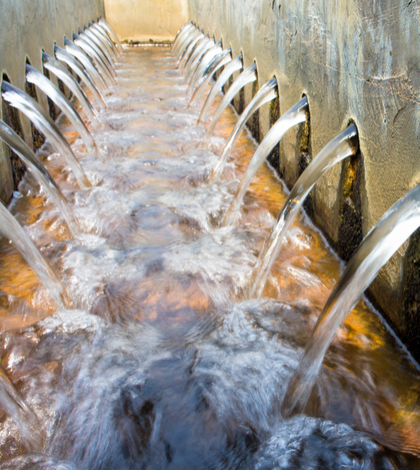As California faces more severe and frequent droughts due to climate change, as well as the demands of a growing population, water recycling has become part of a portfolio of state strategies for building local self-reliance and providing more sustainable, reliable water supplies. These plans and procedures have been integrated into Governor Edmund G. “Jerry” Brown Jr.’s California Water Action Plan. On Tuesday, the State Water Resources Control Board adopted water quality and other requirements in order to ensure the safe use of treated recycled water when used to augment surface water supplies. The new requirements are another resource for local water suppliers to implement to improve their drought resilience.
The regulations specify the quality of treated recycled water that can be added to a surface water reservoir to be used as source of drinking water; the regulations also specify the percentage of recycled water that can be added and how long it must reside there before being treated again at a surface water treatment facility and then provided as drinking water. Additionally, the adoption of the regulation went through a public process of review and comment of over two years.
“Cities and counties around the state are looking to stretch their local water supplies in the face of an increasingly uncertain water future,” said Felicia Marcus, State Water Board chair. “Water efficiency and reuse are the smartest ways to help our water resources go further. Today’s action is another important step in expanding the sensible use of recycled water in California.”
The State Water Board’s most recent action is the board’s latest effort to develop uniform statewide rules allowing for the expanded use of recycled water, indirectly supplementing existing drinking water supplies. The board set requirements in 2014 for using treated recycled water to recharge groundwater and also adopted statewide rules for outdoor uses of recycled water and for irrigating crops.
Regulations for “direct potable reuse,” — treated recycled water to be added directly into a drinking water system or into a raw water supply immediately upstream of a drinking water treatment plant – is currently being studied by the State Water Board. These rules are expected by 2023 after further research, expert consultation and public engagement to ensure the regulations protect public health while increasing drinking water supplies.
Prior to adopting the new regulations for augmenting reservoirs with treated recycled water, the State Water Board sought an independent scientific review and guidance by an expert panel created in 2014 to assist the board in developing regulations for recycled water. The panel determined that the new surface water regulations adequately protect public health.
In addition to water quality requirements, the regulations are also requiring local water systems to engage the public in developing educational projects regarding “surface water augmentation.” The state board recognizes that public education and maintaining public confidence in their water supplies are essential parts of the new regulation’s and project’s success.
In 2017, the State Water Board funded more than $748 million worth of water recycling projects using Proposition 1 grant and loan funds, and low-interest loans from the Clean Water State Revolving Fund. These projects are anticipated to add 44,980 acre-feet of recycled water per year to California’s overall water supply portfolio.
The approval Tuesday of regulations for surface water augmentation streamlines the process for drinking water providers to diversify their water sources, thereby providing a relatively reliable, drought-resilient and sustainable option for supplementing the water in a surface water reservoir that is, or will be, used as a source of domestic drinking water supply.
 California Water News Daily Your Source For Water News in California
California Water News Daily Your Source For Water News in California


